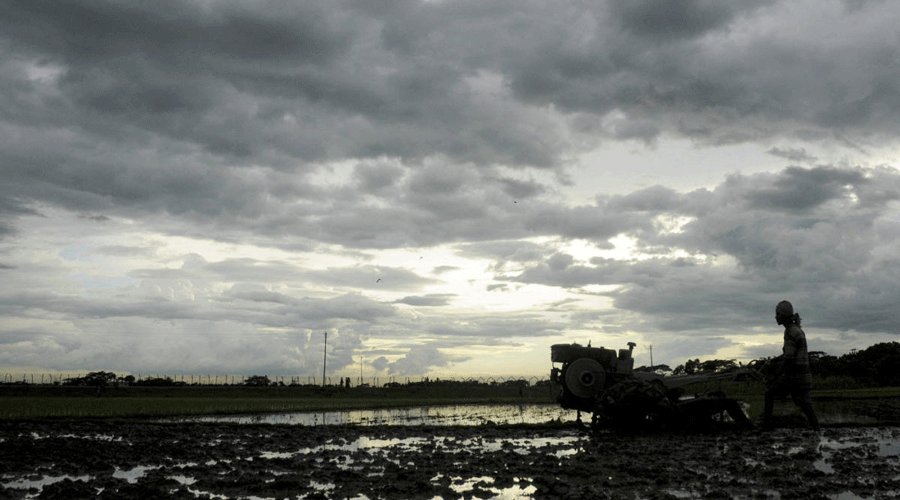India’s national weather agency on Tuesday predicted a borderline-level normal summer monsoon rainfall this year but cautioned that an adverse weather factor may impact the rains during the second half of the four-month season starting June.
The India Meteorological Department (IMD), releasing its first long-range forecast for the 2023 monsoon, said rainfall over the country as a whole is likely to be 96 per cent of the long-period average.
The IMD classifies rainfall between 96 per cent to 104 per cent as “normal”.
The IMD has assigned the highest probability of 35 per cent to normal rainfall through the 2023 monsoon. But the combined probability of below-normal or deficient rainfall, according to the forecast, is 51 per cent, which is greater than the combined probability of normal, above-normal, or excess rainfall.
The forecast — based on computer simulations of the global weather in the months to come and on statistical correlations with distant weather factors — has assigned a 29 per cent probability of normal rainfall and a 22 per cent probability of deficient rainfall.
The forecast comes with a 5 per cent error margin, implying the rainfall could range anywhere from 91 per cent to 101 per cent of the long-period average.
Weather scientists are concerned about possible impacts of El Nino — a slight elevation in the sea surface temperatures in the eastern Pacific Ocean — that has been linked to dry weather across Asia, including a weak monsoon over India.
The IMD said the latest simulations indicate that El Nino conditions are likely to develop during the monsoon season, perhaps by July, and its impact might be felt during the second half of the monsoon season — August and September.
“But all the El Nino years are not bad monsoon years,” IMD’s director general Mrutyunjaya Mohapatra said. “Between 1951 and 2022, out of a total of 15 El Nino years, there have been six years with normal or above normal rainfall.”
Mohapatra said two other weather factors appear to be favourable or veering towards becoming favourable.
One of these is the low snow cover over Eurasia in recent months — the lower the snow cover between December and February, the more favourable it is for good rains. The other factor called the Indian Ocean Dipole — related to Indian Ocean sea surface temperatures — is likely to become positive during the monsoon season which, Mohapatra said, will be “good” for the rains.
Skymet Weather Services, a private agency in India, had on Monday predicted that the monsoon in 2023 would be below normal at 94 per cent of the long-period average.
“How the rainfall gets distributed across time and space over a large geographical area is also important -- not just the overall numbers saying normal or below normal,” Manoj Lunagaria, head of agrometeorology at the Anand Agricultural University in Gujarat, told The Telegraph.
Poor rainfall during the second half of the season, he said, might lead to a condition called terminal drought in kharif crops which could impact the sowing of rabi crops.
The IMD will update its forecasts in the last week of May.











